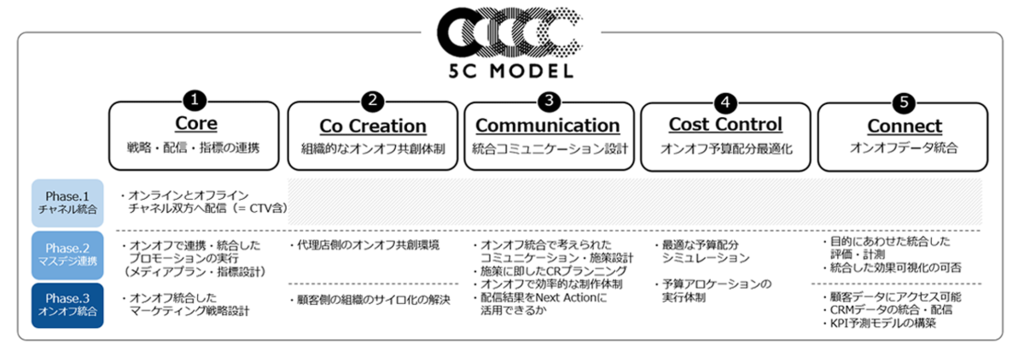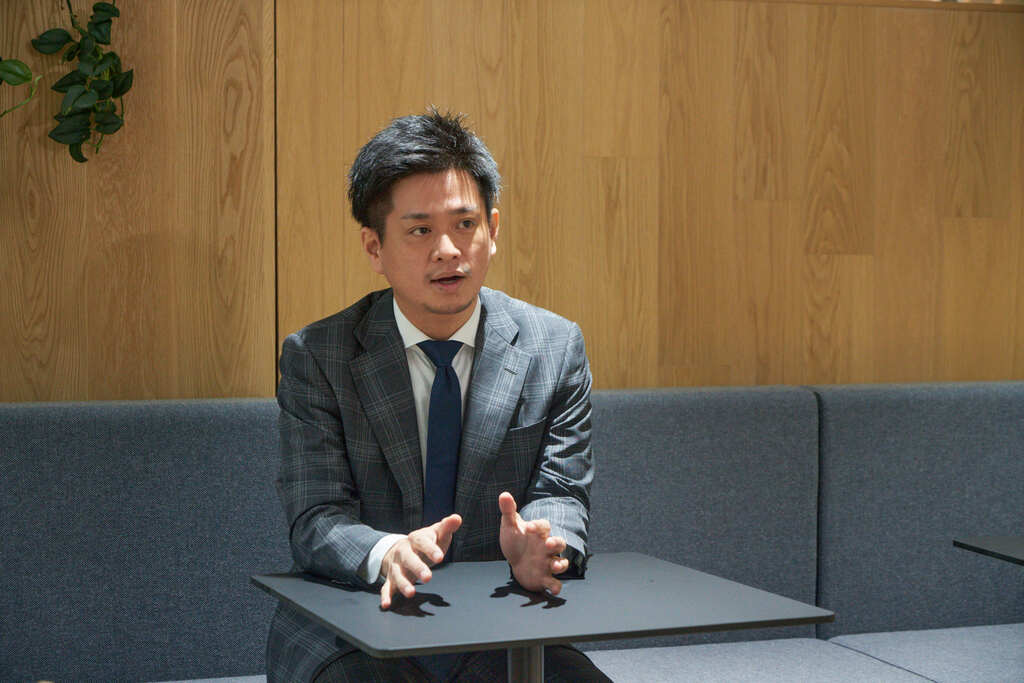The "Five Cs" at the Core of On-Off Integrated Marketing: A Framework for Enhancing Practical Capabilities (Part 2)
For many companies, coordinating online (digital advertising) and offline (mass advertising) efforts remains a critical marketing challenge. This is the second part of our interview with Takuto Kai, Marin Kamikura, and Mizuki Matsuura from the Marketing Strategy Division at SEPTENI CO.,LTD (hereafter: SEPTENI), which promotes integrated online-offline marketing. In Part 1, we learned about SEPTENI CO.,LTD's strengths and the overview of the "5C Model" framework for enhancing on-off integrated marketing execution. In Part 2, they discuss the results achieved by implementing initiatives based on the 5C Model framework, what is necessary to smoothly advance on-off integrated marketing, and their future goals.
Applying the 5C Model to Real Challenges and Progressing Step by Step
Q. When explaining the "5C Model" to clients, what kind of reactions do you typically receive?


Q. In actual projects, does progress typically follow this 5C model smoothly?

Q. It's also interesting that you've incorporated CTV (Connected TV) advertising within "Phase 1 × Core (Strategy, Distribution, Metrics Integration)." Will CTV indeed become a crucial element as we advance integrated online-offline efforts?

The cornerstone of on/off integration is a co-creation framework between the company and the agency.
Q. Among the five Cs, is there one element that is particularly crucial?
Q. Finally, could you share your vision for the ideal state of integrated on-off marketing?
Through practicing the "5C Model" with client companies, we were reminded of the importance of cross-departmental collaboration and company-wide mindset transformation. This insight extends beyond online-offline integration; it's perhaps an essential element for any new challenge. If we view online-offline integration as "an opportunity to achieve company-wide mindset and operational transformation," wouldn't we be able to take on the challenge with even greater enthusiasm?
The information published at this time is as follows.
Was this article helpful?
Newsletter registration is here
We select and publish important news every day
For inquiries about this article
Author

Takuto Kai
Septeni Japan Co., Ltd.
Born in 1987 in Tokyo. Graduated from Meiji University's School of Commerce. After joining SEPTENI CO.,LTD, served as a sales executive handling planning and project management for major clients.<br> After assignments with clients, in-house agencies, and Dentsu Digital Inc., returned to the company and assumed current position.<br> Currently focused on managing a team primarily responsible for execution strategy and media planning, while also driving collaboration with Dentsu Inc.<br> Specializes in digitalizing marketing using ad technology solutions, with extensive experience solving challenges across the full funnel, apps, CRM, and data utilization.

Marin Kamikura
Septeni Japan Co., Ltd.
After graduating from Musashino Art University in 2013, he joined SEPTENI CO.,LTD. Since joining the company, he has been responsible for design and art direction within the Creative Division. From 2017, as Creative Director of the Brand Advertising Division, he has been extensively involved in strategic planning and direction for branding across diverse industries. Since 2018, within the Marketing Strategy Division, he has been engaged in creative planning and creative direction, focusing on solving clients' marketing challenges.

Mizuki Matsuura
Septeni Japan Co., Ltd.
After joining the company as a new graduate in 2016 as an operations consultant, I engaged in consulting work for approximately two years. In 2018, I transferred to the Marketing Strategy Division, where I contributed to developing media strategies across various domains, leveraging my extensive media knowledge based on operational experience. Currently, as an integrated planner handling media planning and evaluation design for both online and offline channels, I create plans that span the entire spectrum from awareness to acquisition to solve client challenges.

